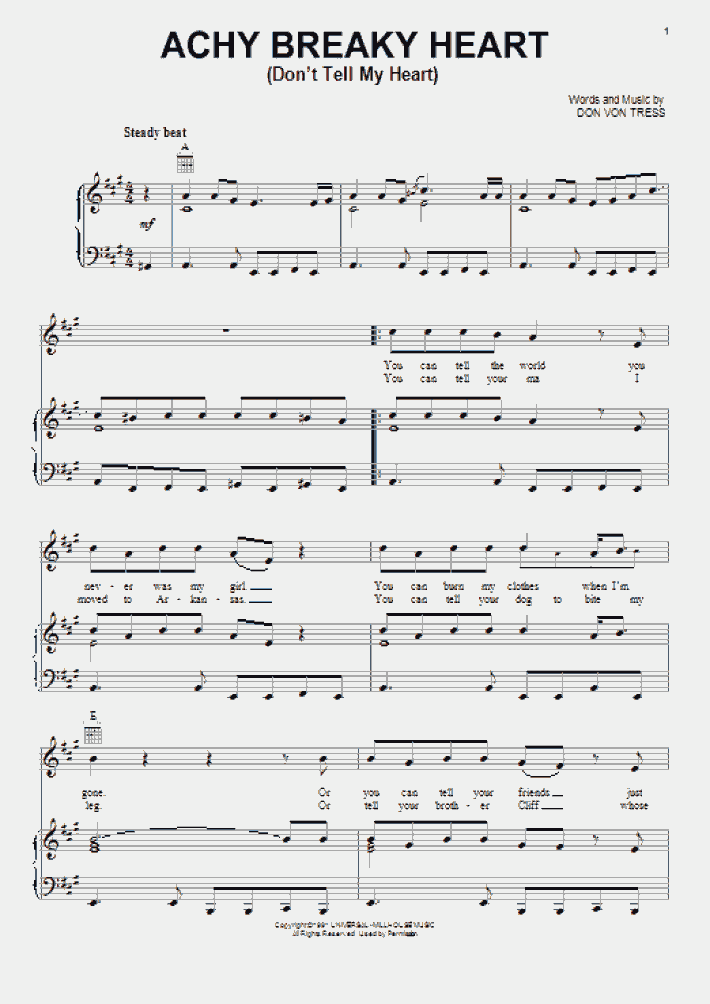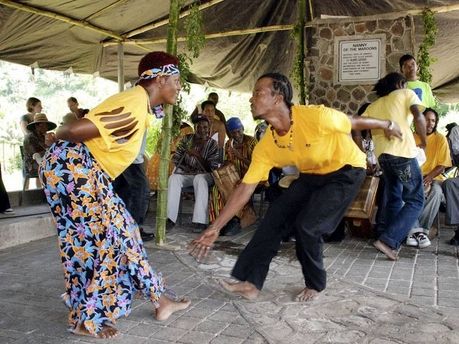How to dance haitian zouk
What is Konpa / Kompa / Compas?
Webert Sicot, the originator of cadence known for his great virtuosity, mostly harmonic skills, was well appreciated in the Caribbean. This is why the term cadence was more popular than compas. Cadence-lypso is the Dominican kadans.
Cadence and calypso were the two dominant styles in Dominica hence the name cadence-lypso. The great majority of the songs are either calypso, reggae and mostly cadence or compas. If there is any fusion it should not be significant enough to be listed on album or CD covers. Finally cadence-lypso is danced the same way as compas.
Originally the word cadence or kadans was on album covers, whether grammacks or exile one. They featured calypso, reggae and mostly cadence: Grammacks: mediba (kadans), banana (sweet kadans), ou pa bon, (kadans), ou pitit (kadans), reggae down, disco live (kadans) this same tune is categorized as zouk retro by Deejay Zak (midlay kadans 11/24/2011) Exile one: akiyaka, gade deye…(Midnight) get ready 1997, etc.
Exile One, the leader of the word cadence-lypso, featured some reggae, calypso and mostly cadence music. For example: Album “Exile one – Gordon Henderson 40 volume 1” features 14 kadans out of 18 tunes. 1. Rosita 2. ba yo boi 3. jumbolo 4. jamais voir ca (calypso tune) 5. reflexion 6. n’homme ka batte n’homme 7. gadez deye 8. ah ta ta 9. Ico vole 10. pompilili 11. aki yaka 12. vivent les vacances aux antilles (calypso tune) 13. Ilyne (calypso tune) 14. nous travail pou ayen 15. cadence lypso 16. sexile 17. come here (reggae tune) 18. interlude. The song cadence lypso is a kadans tune. A third album “Collector kadance lypso” features twelve méringue cadence tunes. The album also features tunes from other kadans bands: 2. Rigrete (Midnight Groover), Serpent la (C Top 6), la vie vini plus raid (Belles combo) 9. Coq et perroquet (Liquid Ice) 12. mwen di ou fe (Black Affairs) 7. Chanson d’amour Ophelia (Exile one).
It is not sure whether the band’s intent was to fusion Trinidadian calypso with Haitian cadence or compas since little was done. The song “La Dominique” in the Album “Exile One Old School Session” could be an attempt, however, not often repeated. The band music repertoire is mostly cadence or compas with all the features of the style.The album “Exile one-Old school Session: Gree/Vert” features mostly méringue cadence or compas: 6 out of 8 tunes. 1) fete commune 2) torti 3) famille Creole 4) d’leau 5) sauvez riviere la and 7) Sylvie of course the band had its personality; it was a great kadans band. In the early 1970s, The full-horn section kadans band Exile One led by the talented Gordon Henderson was the first to use the synthesizers to their music that other young cadence or compas bands from Haiti (mini-jazz) and the French Antilles emulated in the 1970s. Exile One toured many places with kadans music: Japan, the Indian Ocean, Africa, North America, Europe, The Cape Verde islands. Other Dominica cadence bands included the Grammacks. Review Exile one CD 40 anniversary, Grammack collection 74–76 and others available at amazon music: Black Roots, Black Machine, Naked Feet, Belles Combo, Mantra, Black Affairs, Liquid Ice, Wafrikai, Midnighte Groovers and Milestone, while the most famous singers included Bill Thomas, Chubby Marc, Gordon Henderson, Linford John, Janet Azouz, Sinky Rabess, Tony Valmond, Jeff Joseph, Mike Moreau and Anthony Gussie.
The song “La Dominique” in the Album “Exile One Old School Session” could be an attempt, however, not often repeated. The band music repertoire is mostly cadence or compas with all the features of the style.The album “Exile one-Old school Session: Gree/Vert” features mostly méringue cadence or compas: 6 out of 8 tunes. 1) fete commune 2) torti 3) famille Creole 4) d’leau 5) sauvez riviere la and 7) Sylvie of course the band had its personality; it was a great kadans band. In the early 1970s, The full-horn section kadans band Exile One led by the talented Gordon Henderson was the first to use the synthesizers to their music that other young cadence or compas bands from Haiti (mini-jazz) and the French Antilles emulated in the 1970s. Exile One toured many places with kadans music: Japan, the Indian Ocean, Africa, North America, Europe, The Cape Verde islands. Other Dominica cadence bands included the Grammacks. Review Exile one CD 40 anniversary, Grammack collection 74–76 and others available at amazon music: Black Roots, Black Machine, Naked Feet, Belles Combo, Mantra, Black Affairs, Liquid Ice, Wafrikai, Midnighte Groovers and Milestone, while the most famous singers included Bill Thomas, Chubby Marc, Gordon Henderson, Linford John, Janet Azouz, Sinky Rabess, Tony Valmond, Jeff Joseph, Mike Moreau and Anthony Gussie. Ophelia Marie is a popular singer of cadence in the 1980s.
Ophelia Marie is a popular singer of cadence in the 1980s.
Kizomba Dancing & History - Zouk, Kompa, Passada
Updated 11-7-22 (From Interviews & various sources)
Kizomba is Afro Caribbean Zouk
Kizomba is a close and sensual partner dance style which is growing massively through the world and its extremely popular in Europe which is driving this style everywhere. It's mainly considered to have come from Portugal because this was the place that fused all the different cultural styles, it was the melting pot and the place in Europe it all came together. The base of Kizomba music is actually "Afro Caribbean Zouk' Many West African Countries have their own version of Zouk. Kizomba is an encompassing name for many styles which was orginally called 'Passada', its actually Afro - Caribbean Zouk, a fusion between Caribbean Zouk, Caribbean Kompa and Angolan traditional music, the same thing happens with the dance styles see '4 Pillars of Kizomba'. Caboverdians define their afro-zouk as cola-zouk, cabo-zouk or cabo-love. Afro-zouk from Guinea-Bissau is called meia-batida. In fact, afro-zouk exists in countries like the Congo, Mali, Ivory Coast, Gabon, São Tomé and Prince, Mozambique, Nigeria, Cameroon, Madagascar etc. Zouk started in the French Caribbean which also has Afro influences. The dance styles also follow the music. For Example Zouk music from the Caribbean also has Zouk Dancing style very much the same as Kizomba, it's from the Caribbean which also influences Kizomba the dance & vice versa. The history of Kizomba is difficult but necessary, it's relatively hard to find through the conflicting information and disinformation because many try to claim it. It's good to focus on the music origins, since it is the base of every dance. It’s interesting to note that the associated dances experienced similar if not the same paths as the music because they usually go together.
Afro-zouk from Guinea-Bissau is called meia-batida. In fact, afro-zouk exists in countries like the Congo, Mali, Ivory Coast, Gabon, São Tomé and Prince, Mozambique, Nigeria, Cameroon, Madagascar etc. Zouk started in the French Caribbean which also has Afro influences. The dance styles also follow the music. For Example Zouk music from the Caribbean also has Zouk Dancing style very much the same as Kizomba, it's from the Caribbean which also influences Kizomba the dance & vice versa. The history of Kizomba is difficult but necessary, it's relatively hard to find through the conflicting information and disinformation because many try to claim it. It's good to focus on the music origins, since it is the base of every dance. It’s interesting to note that the associated dances experienced similar if not the same paths as the music because they usually go together.
In a Nutshell
Dancers from various Islands & countries came to dance passada socially in Portugal, it was this, that kick started a mixing pot of moves, style & basics to create what we know as Kizomba Today. As an example; some dancers previous only used either a base of 3 or a base of 4 (i.e. Basic 2 or Basic 3) . Each had their own unique steps & styles depending on their background but once they started learning from each other new possibilities gave birth to more kinds of basics and moves. This is how dance styles evolve.
As an example; some dancers previous only used either a base of 3 or a base of 4 (i.e. Basic 2 or Basic 3) . Each had their own unique steps & styles depending on their background but once they started learning from each other new possibilities gave birth to more kinds of basics and moves. This is how dance styles evolve.
Kizomba Music genre
Kizomba is characterised by a slower, romantic, more sensuous rhythm than Semba. Kizomba music emerged as a more modern music genre with a sensual touch mixed with African rhythm and Kompa & Zouk from the Caribbean.
Original influential music styles from Cape Verde are funaná, morna, coladeira and batuque. Thanks to the French Antilles Zouk aka Caribbean Zouk music and the strong influence of Semba, Cape Verdean singers have developed significantly Kizomba and Zouk (mixing it with Coladeira) known as cabo love or cola-dance. Moreover, every lusophone country has developed its own Kizomba music flavour which is a type of Afro-Zouk It is impossible to speak about Kizomba and not speak about Caboverdians and how much they influenced many countries afro-zouk/cola-zouk/meia-batida/kizomba.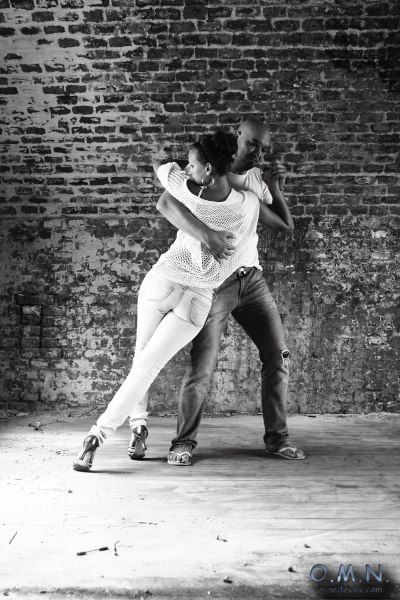 Especially because in the beginning of the 90s Angola was still going through a civil war that started in 1975 (right after their independence from Portugal) and only finished in 2002.
Especially because in the beginning of the 90s Angola was still going through a civil war that started in 1975 (right after their independence from Portugal) and only finished in 2002.
All these Caboverdian singers and their music were having a big impact on the PALOP* community at large. In Portugal was truly were people kept Kizomba alive, Angola was at war and the rest of the PALOP countries were also struggling in their new independence. The love for kompa, zouk and afrozouk inadvertently had a uniting effect at PALOP night clubs frequented by emigrants arriving in Portugal.
Popular singers from Angola who resided in Portugal during the 90s were mainly Bonga, Eduardo Paim and Paulo Flores with Irmãos Verdades (having their debut in the late 90s). And we saw the appearance of artists like Fernando Santos, Carlos Burity (Semba), Rey Weba, Maya Cool, Tabanka Djaz and Justino Delgado from Guine Bissau, or Juka from Mozambique or Camilo Domingos from São Tomé and Prince.Caboverdian singers and producers had influence in Congo (Lutchiana), Ivory Coast (Monique Seka), Gabon (Oliver N’Goma), Angola, Guine-Bissau and São Tomé and Prince. .... Remember the dance styles follow the music!
.... Remember the dance styles follow the music!
Kizomba Dance genre
The Kizomba dance is a couple dance from which many styles such as, Tarraxinha and Urban Kiz derived from. Before the word Kizomba was adopted by Angolans in the 80s most PALOPS used to refer to it as “Passada” (including many Angolans). Passada uses the universal basics of partner dances. Side to side, Travelling & 360 degree rotation. These are basics that came from the European dance called the Waltz which is dating back to the 16th century, its the original partner dance style of them all. Almost all partner dances have universal basics; from Bolero, to Son, to Bachata, Kompa to Semba, to Forro, to Tango etc… Each of these dances are how each culture perceived and mutated those basics into something that reflects their identity through music & dance.
Passada to Kizomba
Orginally Kizomba was infact known as Passada. The name change from Passada to Kizomba happened in Portugal where this dance style was popularised. There were many Angolans in the Passada dance community too which sparked the change, it was also fuelled by a number of original Kizomba teachers as below. (kizomba/quizomba/izomba), translated from kimbundo it means “party”, describing both the event and the place where people would gather to dance and celebrate. So the name Kizomba was much more fitting & catchier, soon everyone was calling it Kizomba - which in turn also helped its popularity.
There were many Angolans in the Passada dance community too which sparked the change, it was also fuelled by a number of original Kizomba teachers as below. (kizomba/quizomba/izomba), translated from kimbundo it means “party”, describing both the event and the place where people would gather to dance and celebrate. So the name Kizomba was much more fitting & catchier, soon everyone was calling it Kizomba - which in turn also helped its popularity.
The 7 Original Kizomba Teachers
These teachers are the main dancers that popularised Kizomba in Portugal. They are teachers of teachers and pushed this style through to the world. They are considered very important in the development from Passada to Kizomba and influenced the dance style as we know today.
Names Include;
- Kwenda Lima
- Helio Santos
- Ze Barbosa
- Tomas Keita
- Petchu
- Anthonio Bandeira
- Avelino chantre
Look them up on youtube and you will see they all dance very differently, different styles & different flavours from various cultures. It's amazing to see the rich diversity and yes - they are 'all' valid and Original Authentic Kizomba dancers.
It's amazing to see the rich diversity and yes - they are 'all' valid and Original Authentic Kizomba dancers.
Kizomba Claims
Unfortunately there are many promoters, teachers, deejays & dancers who claim they are the ones dancing the 'original or traditional Kizomba', and other peopler are not, or some would just say "Kizomba comes from Angola". Often this is repackaged Semba danced to Kizomba. However the truth is Kizomba is Passada and it's actually a mix of many dance styles and is much much more diverse that one style - (see 4 pillars of Kizomba). Kizomba is described as "Afro-Caribbean-Zouk" as outlined in detail on this page, its not just "Afro"! The big problem is the same disinformation is passed on from one teacher to the next - often due to subjective underlying control, personal taste, marketing reasons or money & fame. Those very ideas or ideals often claiming to preserve these dances by trying to take ownership, is infact limiting it's true potential. You can also see parallels with other dance styles where similar claims have been done in the past.
You can also see parallels with other dance styles where similar claims have been done in the past.
This information is not designed to disrespect any one person or culture, however to respect 'all' the cultures which influenced Kizomba. It's always better to open up to growth not restrict it, because if its not growing its dying. Yes we also need to value the History and 'all' the original styles need to be taught, respected and passed on, because they give the true essence of the dance.
The 2nd video below does a great job of explaining these concepts. Infact we highly recommend watching all the videos below to get more understanding of Kizomba roots, especially Helio Santos, one of the 7 original teachers/dancers of Kizomba in Portugal who talks about the misinformation. This main group of dancers that influenced & developed the dance style and its popularity in Portugal.
Is Kizomba a Latin Dance?
Most people say it isn't because they don't understand the full history.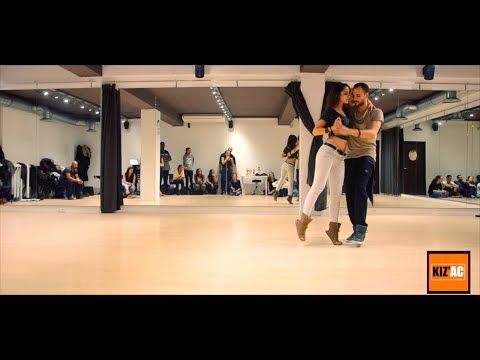 Because of the connection to Caribbean and they are romance languages i.e. Latin. Then you could argue yes it is a Latin Dance. Infact all Latin dances also have Afro hertitage so all Latin dances are Afro Latin Dances. Now you might also say all Afro Latin Dances are also Euro Afro Latin Dances because without the Waltz we wouldn't have partner dancing. But as for a 'Latin dance night' which could include; Salsa, Merengue, Bachata & Kizomba we think this is appropriate because its inclusive.
Because of the connection to Caribbean and they are romance languages i.e. Latin. Then you could argue yes it is a Latin Dance. Infact all Latin dances also have Afro hertitage so all Latin dances are Afro Latin Dances. Now you might also say all Afro Latin Dances are also Euro Afro Latin Dances because without the Waltz we wouldn't have partner dancing. But as for a 'Latin dance night' which could include; Salsa, Merengue, Bachata & Kizomba we think this is appropriate because its inclusive.
The 4 pillars of of Traditional Kizomba are the Music and dance styles that influenced what is known as Kizomba Today, which include; Kompa, Zouk, Semba & Coladiera. Kizomba embodies all these traditional & sub styles of music and dance. You can dance the style you like or a mix
of them to any of these types of music, this is the true freedom Kizomba because its many styles.
#1 Kompa, Compa (konpa)
The genre was popularized following the 1955 creation of the band Conjunto International by Nemours Jean-Batiste. It is the main music of many countries such as Dominica and the French Antilles, etc. Whether it is called zouk where French Antilles artists of Martinique and Guadalupe have taken it or compas in places where Haitian artists have toured, this méringue style is very influential in the Caribbean, Cabo Verde, Guinea Bissau, Angola and many others West African countries, France, part of Canada, South and North America.
It is the main music of many countries such as Dominica and the French Antilles, etc. Whether it is called zouk where French Antilles artists of Martinique and Guadalupe have taken it or compas in places where Haitian artists have toured, this méringue style is very influential in the Caribbean, Cabo Verde, Guinea Bissau, Angola and many others West African countries, France, part of Canada, South and North America.
By the 1960s, Kompa Direk became the most popular form of Haitian music, with numerous bands arriving on the scene: Tabou Combo, Bosa Combo, Shlue-Shlue, and Les Fantaisistes. This was during the latter part of the 60's, post 1967. The latter bands were referred to as "Mini Djaz." A more guitar emphasis was placed in the music, as in Rock & Roll. The bands were smaller versions of Nemours's orchestra. The 1960s also brought about the exposure of Kompa to a wider audience and solidifying its status as one of the popular French Caribbean music style straight into the 70's.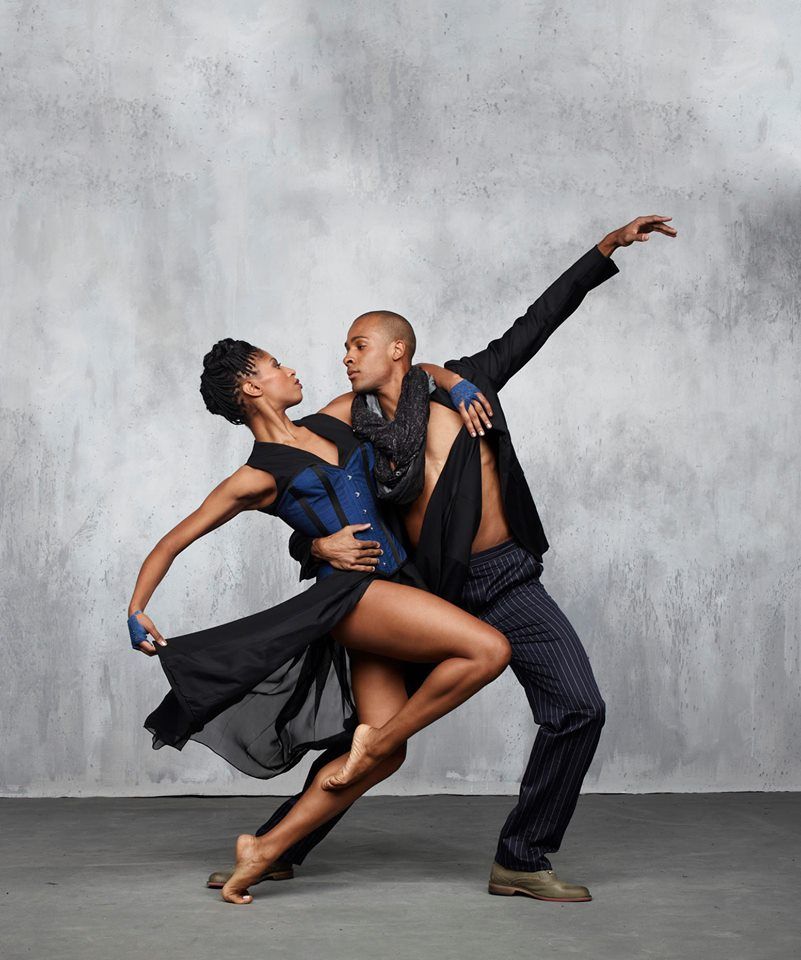
By the 80's, we see the rise of antillean Zouk and Kassav. By mid 80s, Zouk was the most listened to music in Haiti. This spurred a new style of Kompa, called nouvel jenerasyon. Nouvel jenerasyon incorporated technology in Kompa, synthesizers, drum machines, computer software. It streamlined the Kompa band. Synthesizers replaced horns. Drum machines used in placed of conga, tom toms, and even the drummer. Some musician went further and got rid of all natural instruments, totally synthesized, called digital bands. Less musicians were needed to produce and perform Kompa. The Kompa band was geared to more concert venues as opposed to being a dance hall party band.
Literally meaning “beat” or “rythym” in Spanish, kompa is a Haitian music genre with the stylings of Cuban contradanza, Son Cubano, jazz elements, African rhythms, and Dominican merengue. Unlike zouk, it is sung in mostly Haitian Creole.
#2 Zouk
Zouk is a style of music and dance derived from Afro-Caribbean French creole culture of the lesser Antilles, Martinique, Guadeloupe, Dominica, and St. Lucia. Zouk had its initial beginnings in the French department of Guadeloupe and Martinique. Initially, the French departments listened to Jazz and Latin music(Brazil, Argentina, Cuba). Numerous bands sprang up playing these forms.
Lucia. Zouk had its initial beginnings in the French department of Guadeloupe and Martinique. Initially, the French departments listened to Jazz and Latin music(Brazil, Argentina, Cuba). Numerous bands sprang up playing these forms.
Zouk is dance music. Zouk dance style is similar to Kompa and often known now as Zouk Love or French Zouk. Zouk also influenced Kizomba and developed its own dancing style as we know.
Zouk has a fast rhythm, followed by a strong beat, and instrumentally is created by traditional instruments in live orchestra. It is sung mainly in French creole. Zouk, today often described as “retro-zouk,” had its beginning in 1979. History tells us that in 1979 in Paris Jacob F. Desvarieux, Pierre-Edouard Décimus and his brother Georges Décimus met together and decided to make a new album. All three of them came from Guadeloupe, so they gathered musicians from the French Antilles* and formed a band known as Kassav. The first lineup of Kassav was all from Guadeloupe, but soon after it gained members from Martinique as well.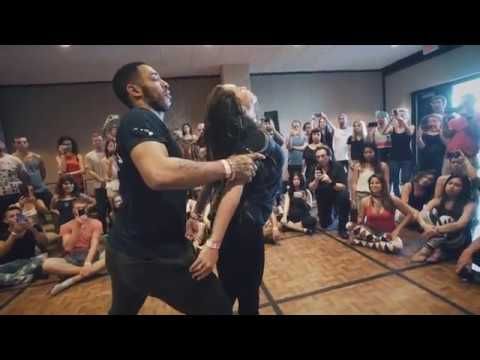 These musicians were from the French Antilles and had well known careers all through the Caribbean. Their albums Love and Ka Dance were created in 1980 with influences of different styles of music from throughout the Caribbean; kompa (Haiti), cadence and merengue (Dominican Republic), calipso (Trinidad & Tobago) and others all combined with strong carnival sounds. This is how zouk was made. The name Zouk comes from Creole in Martinique and the meaning of “zouk” is translated as “festival,” which indeed describes the music itself very well.
These musicians were from the French Antilles and had well known careers all through the Caribbean. Their albums Love and Ka Dance were created in 1980 with influences of different styles of music from throughout the Caribbean; kompa (Haiti), cadence and merengue (Dominican Republic), calipso (Trinidad & Tobago) and others all combined with strong carnival sounds. This is how zouk was made. The name Zouk comes from Creole in Martinique and the meaning of “zouk” is translated as “festival,” which indeed describes the music itself very well.
Encouraged by their big success, Kassav did not confine their touring to just the Caribbean and France, but continued to spread their music to Europe and Africa as well; and as history knows, to the whole world. Zouk became the base of new types of music, not only kizomba, but also cola-zouk (Cape Verde).
Is Zouk Caribbean or Brazilian?
Zouk the dance, music & the name comes from the Caribbean. The confusion happens because, Brazilians Lambada dancers who got hold of French Zouk music from Rum traders from the Caribbean, created their own dance style from this music, known today as Brazilian Zouk or Lambazouk. Lambada Music & the dance also had influence from the Caribbean.
Lambada Music & the dance also had influence from the Caribbean.
#3 Semba
A traditional music & dance style from Angola, it’s the singular form of Masemba. Semba means “a touch of bellies” in the Quimbundo language of the Bantus of Angola, a move that characterizes the dance.
Semba is very much alive and popular in Angola today as it was long before its independence from the Portuguese Colonial System on November 11, 1975. Various new semba artists emerge each year in Angola, as they render homage to veteran semba masters, many of whom are still performing. Other styles influenced by semba in Angola are rebita, as well as kazukuta and kabetula which are primarily carnival music. Semba is the predecessor to a variety of music styles originating from Angola like kuduro, or kuduru, which could be considered the Angolan version of techno/house.
#4 Coladeira
Is a music genre from Cabo Verde. The word koladera initially referred to the act of going out and singing the colá. According to the oral tradition, a new musical genre appeared in the 1930s.
According to the oral tradition, a new musical genre appeared in the 1930s.
Coladeira continued to integrate influences from abroad, from Brazilian music and also from Anglo-Saxon music. In the 1970s, with the appearance of movements against colonialism and relations with socialist countries, other influences came along, including Latin-American music (Bolero, Son Cubano, Salsa, Cumbia) and African music (especially from Angola and Guine-Bissau).
In terms of musical structure, coladeira began to slowly lose the traits that used to identify it with morna. It was in this period that the dichotomy morna \ coladeira was established.
There is a strong kompa influence in Cape Verdean music. During the 1960s-1980s, Haitian artists and bands such as Claudette & Ti Pierre, Tabou Combo, and especially Gesner Henry alias Coupe Cloue, and the Dominican group Exile One, were very popular in Africa. Exile One was the first to export cadence or compas music to the Cape Verde islands.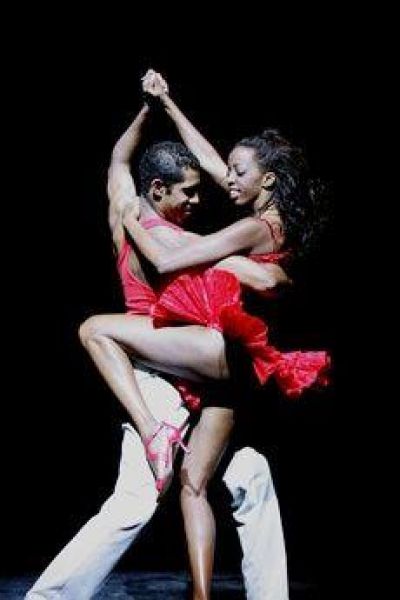 Cape Verdeans artists have been exposed to compas and zouk in the USA and France. In addition, the French Antilles band Kassav and other French Antillean musicians, whose main music was Zouk toured the islands on various occasions.
Cape Verdeans artists have been exposed to compas and zouk in the USA and France. In addition, the French Antilles band Kassav and other French Antillean musicians, whose main music was Zouk toured the islands on various occasions.
Waltz the Predecessor to all
The Predecessor to all partner dances including KIzomba is the Waltz the original style is generally termed the Viennese Waltz. It's the oldest of all the modern partner dance styles in the closed hold, which came from Vienna, Austria. The Viennese Waltz originates from the Volta in the 1500's which came from France. The Volta was also the only court dance of the period performed by a couple in a closed embrace. It ushered in a whole new way of looking at dance... read the full article here >
Is Kizomba like Tango?
When introducing a new dance form, it can be helpful to compare it to something to give people a frame of reference. The is often used in advertising because people have no idea what this dance is like.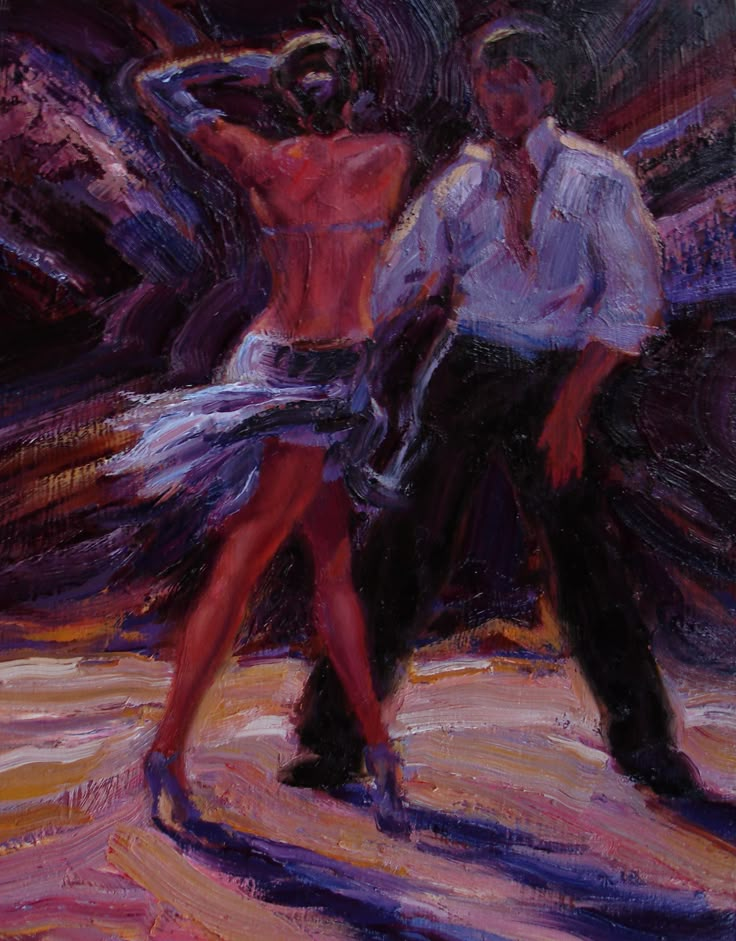 People often say, “Kizomba is like African Tango. You can see from the information on this page that all partner dance styles hold universal basics. Plus there is so much in common in History of Tango & Kizomba which goes even further back.
People often say, “Kizomba is like African Tango. You can see from the information on this page that all partner dance styles hold universal basics. Plus there is so much in common in History of Tango & Kizomba which goes even further back.
Beyond that, a newer generation of dancers, primarily based in Paris but with students all over the world, have taken inspiration from modern Tango to add new vocabulary to their Kizomba. It is possible to see a whole range of steps that are very similar to those in Argentine Tango. Furthermore, many of these dancers have altered their technique to better suit this vocabulary, often dancing with a straighter spine or even sliding through their steps which you will often see in Kizomba Fusion.
Is Kizomba sexy?
Maybe you walked into the Kizomba room at a large dance festival, it was really dark, and you saw people making out on the dance floor. Maybe you’ve been on YouTube and seen people what looks like grinding against each other. Kizomba can be sexy, however, that is not inherent to the dance, orginally it like other similar dance styles such as Semba, Kompa, Zouk Love , Meregnue or Bolero. These are fun non-sexulised traditional 'family dances', you dance with your uncle, mother, gransparents, children and friends etc. On this side of the world, it's closer than we are used to, which can give it a bad name. Lets aim to educate ourselves so we don't give this a bad name and come to realise this isn't a Sexualised dance but a Sensualised one that you can dance with anyone and all ages.
Kizomba can be sexy, however, that is not inherent to the dance, orginally it like other similar dance styles such as Semba, Kompa, Zouk Love , Meregnue or Bolero. These are fun non-sexulised traditional 'family dances', you dance with your uncle, mother, gransparents, children and friends etc. On this side of the world, it's closer than we are used to, which can give it a bad name. Lets aim to educate ourselves so we don't give this a bad name and come to realise this isn't a Sexualised dance but a Sensualised one that you can dance with anyone and all ages.
Kizomba is Easy?
Well, in the sense that you can learn three or four steps and be set for a whole night of dancing, yes. With the right teacher, in an hour or two you can get enough understanding of movement and basic steps to dance through an entire social with a touch of musicality. Kizomba is totally accessible for beginners – so if you haven’t tried it yet, get started!
The problem is when people dismiss Kizomba as easily mastered. Many people take a month’s worth of classes and then figure themselves for advanced dancers – after all, once you know the Saidas and a couple tricks or dips, you’re set, right?
Many people take a month’s worth of classes and then figure themselves for advanced dancers – after all, once you know the Saidas and a couple tricks or dips, you’re set, right?
These people are missing out on the best part of Kizomba: how you move while staying so closely connected to your partner. Or maybe they get stuck memorizing combinations, instead of learning to use their vocabulary to put together their own poetic movement. Kizomba has so much subtlety and so many intricate possibilities.
Ground your movement and find the right alignment with your partner, and then you begin to feel their every tiny isolation. Figure out pivot technique and every move you know can suddenly be opened to variations in position. Work on slow-motion, stop motion, and syncopation, and again the standards become almost unrecognisably new and your feet can dance out the exact rhythms of a particular instrument. Dissociate your upper and lower body, your feet from your partners’, their hips from yours – this list could go on and on and on
As with any dance, the more you learn, the better you are able to appreciate the subtle differences that indicate mastery.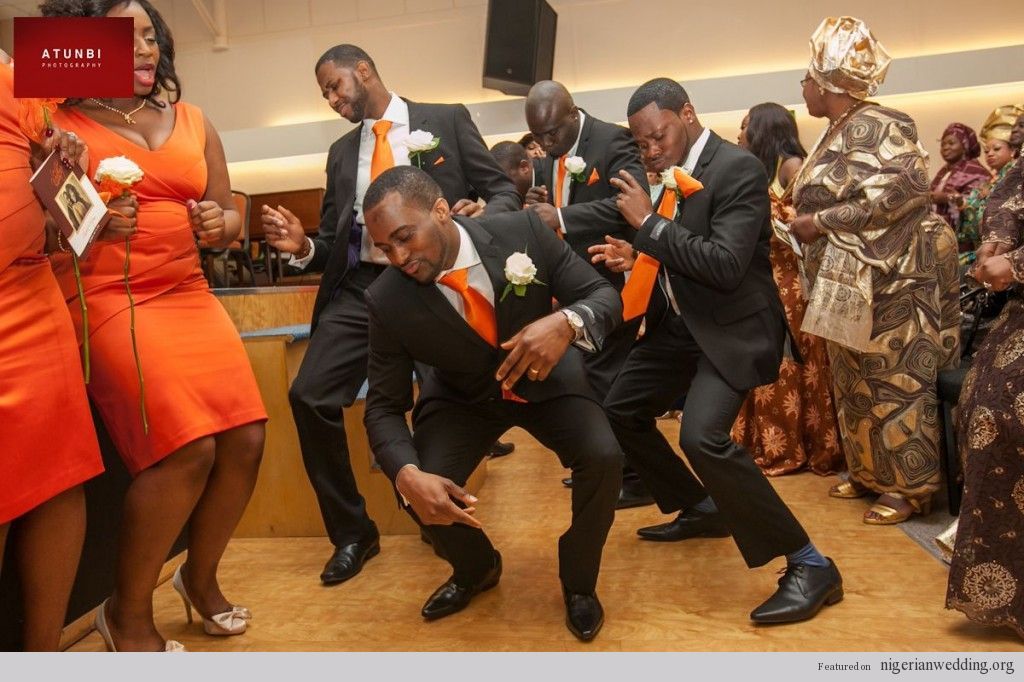 In Kizomba, each technique mastered is like an additional colour palette for you to paint with, another supply kit for you to build from, another door to a realm of expressing the music with our bodies.
In Kizomba, each technique mastered is like an additional colour palette for you to paint with, another supply kit for you to build from, another door to a realm of expressing the music with our bodies.
Kizomba Music
Kizomba is an umbrella term used to describe Afro-Zouk Music. All the genres listed here had a big influence on what we call kizomba today. This is just a partial list as there are other African rhythms that have had their influence on this remarkable genre.
Kompa –HAITI
Skah Skah – https://www.youtube.com/watch?v=SY5ukYOkZg8
Coupe Cloue – https://www.youtube.com/watch?v=0LpU28yAekY
Sweet Mickey – https://www.youtube.com/watch?v=eONSeWzvHGw
ZOUK – GUADALUPE AND MARTINIQUE
Kassav – https://www.youtube.com/watch?v=iYivaguAu4s
Experience 7 – https://www.youtube.com/watch?v=ZBhdyq77tRc
Zouk Machine – https://www.youtube.com/watch?v=6gOU8iRnZ6M
ZOUK LOVE – GUADALUPE AND MARTINIQUE
Jean Michel Rotin – https://www. youtube.com/watch?v=6o-h_JObqRQ
youtube.com/watch?v=6o-h_JObqRQ
Nichols – https://www.youtube.com/watch?v=4eksTaqiX7M
Ludo – https://www.youtube.com/watch?v=4fFrESLk9pw
SEMBA – ANGOLA
Bonga – https://www.youtube.com/watch?v=fhwVekYE4-I
Bangao – https://www.youtube.com/watch?v=Bx7DE4nXc9U
Carlos Buriti – https://www.youtube.com/watch?v=guTKkqwDB9s
COLADERA – CABO-VERDE
Bana – https://www.youtube.com/watch?v=kIYCdg0Nds0
Cesaria Evora – https://www.youtube.com/watch?v=XGj77k9OBf4
Tito Paris – https://www.youtube.com/watch?v=XCeLjMjZSHo
COLA-ZOUK – CABO-VERDE
Livity – https://www.youtube.com/watch?v=rc3upa32bSQ
Grace Evora – https://www.youtube.com/watch?v=7tYDI98DDUk
Nando Da Cruz – https://www.youtube.com/watch?v=l15E2yOm7dM
CABO-ZOUK – CABO-VERDE
Kino Cabral – https://www.youtube.com/watch?v=NGYHy3v1mFI
Susanna Lubrano – https://www.youtube.com/watch?v=AHMQThCeZWo
Beto Dias – https://www.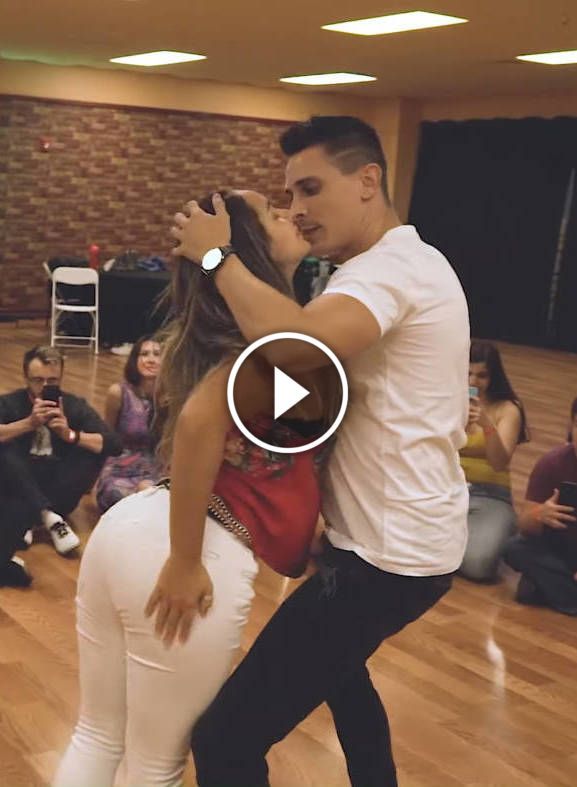 youtube.com/watch?v=MDaEg7TIp1E
youtube.com/watch?v=MDaEg7TIp1E
CABO-LOVE – CABO-VERDE
Phillipe Monteiro – https://www.youtube.com/watch?v=SDrEnSBs5Zs
Gama – https://www.youtube.com/watch?v=B1hTJwKUBg0
GETTO – ZOUK – CABO-VERDE
Nelson Freitas – https://www.youtube.com/watch?v=l9XUIVFajF8
Johny Ramos – https://www.youtube.com/watch?v=lDP5ij6N1t0
Djodje – https://www.youtube.com/watch?v=Hvu4Ff9kZgA
TARRAXINHA – ANGOLA
Dj Massacre – https://www.youtube.com/watch?v=KxSG3aFjih0
Dj Paparazzi – https://www.youtube.com/watch?v=LoqvpPWZ364
AFRO-ZOUK – FUSION OF ZOUK Not from ANGOLA
Tabanka Djaz – https://www.youtube.com/watch?v=5wHXvtWPdxU
Oliver N’Goma – https://www.youtube.com/watch?v=2msRi40IEG0
KIZOMBA – ANGOLA
Eduardo Paim – https://www.youtube.com/watch?v=1QaLXuRTslw
Paulo Flores – https://www.youtube.com/watch?v=HwWLco6Ri4M
Ruka Van Dunem – https://www.youtube.com/watch?v=FXxvA5awseY
Matias Damasio – https://www. youtube.com/watch?v=Q86lCtj1BYs
youtube.com/watch?v=Q86lCtj1BYs
Kyaku Kyadaff – https://www.youtube.com/watch?v=i2rRxg6a1OY
Yola Semedo – https://www.youtube.com/watch?v=RG-2liMTMwk
Dance Zuk (Zouk)
Zuk is a dance of different styles, closely related to the music of the same name, but differing in performance depending on the place of its distribution. Zouk is a romantic dance that combines: love, passion, tenderness, sensuality. It captures your emotions, slowly drags you into a whirlpool of feelings and drives you crazy. The dance attracts not only the soul of the partners, but also the enthusiastic glances of the audience.
" Party ", " festival " - this is how the word "zouk" is translated from the French Creole language.
The zouk became famous and popular in the 1980s after it was used in theatrical performances that amazed audiences with new music, spectacular dance elements and colorful costumes. From that moment, the zouk began its march around the world.
The history of the Zuk dance
The Zuk dance is relatively young. Late 20th century groups Grammacks and Exile One popularized rhythmic dance music common in the French islands Guadeloupe , Haiti , Martinique .
The zouk style began to spread actively in Europe, especially in France, and also in North America.
Due to the fact that the performance of zouk was influenced by many different cultures, four distinct styles gradually developed:
- zouk-love (Haitian and French Caribbean)
- lambazouk (Brazilian style folded lambada)
- kizomba (common in Angola and Cape Verde)
- soulzouk (Introduced in China in 2005 with a Brazilian variant mixed with other contemporary genres).
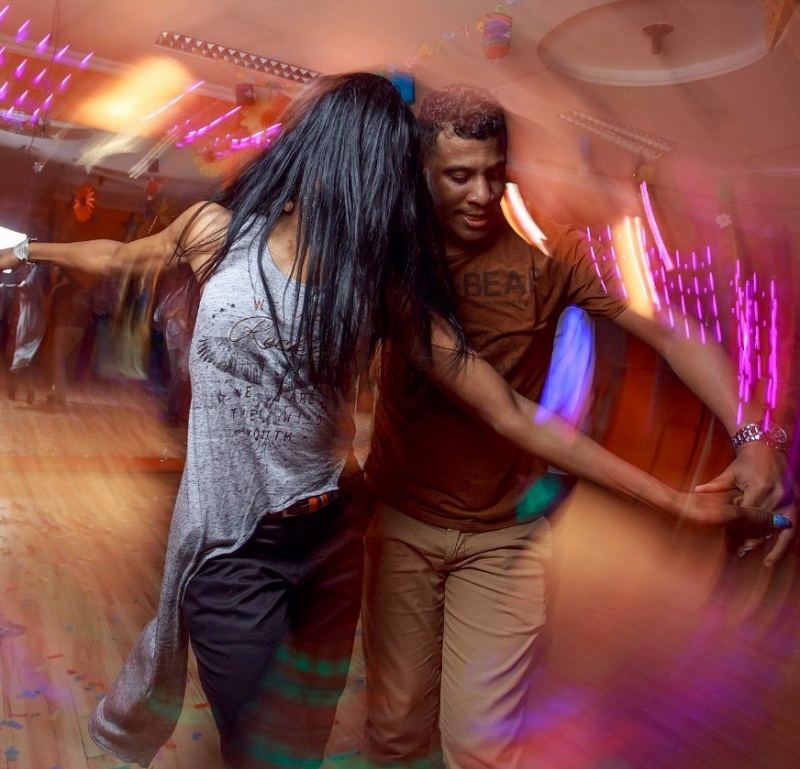
Zouk continues to develop at the present time, evidence of this is the emergence of a new direction - Zouk Revolution .
Types of zouk dance and their features
Features of this dance are determined by its style.
This type is one of the leading styles in which the dance is performed to lyrical and dramatic songs about love and parting. The pace of execution is slow.
The origin of this style is associated with songs performed by Ophelia Mary , a singer from Dominican Republic .
Zouk-love is somewhat similar to the traditional Caribbean style, quite simple and uncomplicated in execution, which mainly uses steps with the transfer of weight from one foot to the other. And the movements of the hips, the main movements in zouk-love, are distinguished by ease, smoothness, as if flowing from one to another.
The maximum proximity of the dancers during the performance, the limited spatial movement made the dance a suitable "club" option. Zouk-love is most widespread in French-speaking countries.
- Kizomba
Kizomba is more common in Angola, Cape Verde and Portugal.
Externally, kizomba is very similar to zouk-love. It is also characterized by the close contact of the dancers and the movement of the hips. The peculiarity of this style lies in the fact that in the dance there are a lot of movements with the legs below the knees - various turns of the feet, throwing one leg over the other. The upper body is usually inactive. The dancers practically do not separate during the dance, the contact of the bodies is close and constant.
- Lambazouk
In Brazil, a mixture of Caribbean zouk and lambada dance took place.
Lambada is an energetic and fast dance, and its performance to the music of the zouk changed the style of the dance, gradually turning into lambazouk.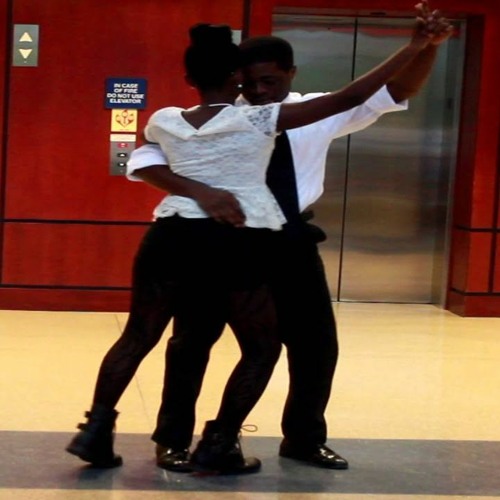
This style is more effective and more complex than the previous ones. The movements of the hips in it are the main ones, but the dance is more rhythmic, filled with passion and sensuality. It uses turns and cambrai (falls), and sometimes acrobatics may be used.
A very important role in this variety of zouk is played by the flexibility of the partner, who bends during the dance, gracefully throws her head back, which gives the dance a unique sensual flavor.
- Soulzouk
The Soulzouk or the freestyle zook has only recently appeared. A teacher from Brazil created it in China, but it still received the greatest distribution among Brazilians.
The peculiarity of the style is seen in the fact that it can be performed not only with traditional zouk music, but also with rap, R&B, hip-hop.
The movements of the dance have also undergone significant changes - it already uses not only the movements of the hips as leading ones, but includes the legs, shoulders and head.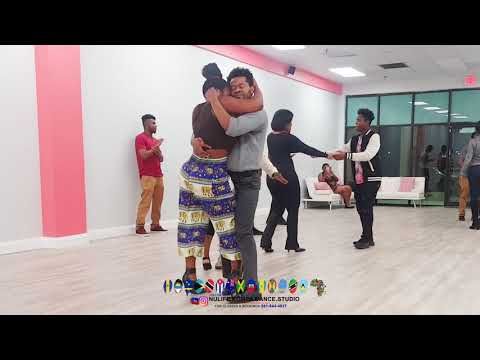
- Neozouk
- Created by DJ Mafie Zouker. The music can shift from a traditional uninterrupted baseline, as in Zouk Lambada, to soft sounds and melodies or hard Industrial, ranging from traditional melodies from Brazil to remixes of popular music with an emotional tinge. All of these musical variations create space for the dancers to effectively express the accents and slow down the music. In Neo-Zouk, they usually dance in a circle, without breaking the connection of the hands, often the tools of the counterweight of the partners connected in movement are used to lead.
- Zouk-Flow
- smooth and consistent "flow" of impulses of the partner's arms and body into the movements of the partner's arms and body. That is, the partners "float" in the hands of each other.
- Brazilian Zouk
- It is especially spectacular and sensual.
Its basis is the movements of the hips that define the character of the dance and fill it with fire, and numerous turns and connections give the zouk its main stylistic feature - infinity.
Turns, approaches, movements of the body and arms. Smooth movements and rapid steps, all together it is fire and water - something that you can look at endlessly.
The influence of Latin American music contributes to the comparison of zouk with salsa, rumba or tango, but this impression is misleading: in latin the partner's hands lead the partner, in zouk her partner's hips lead her.
The most striking in dance are the expressive movements of the partner's head and neck. Loose hair focuses on the poses of the dancers, giving them entertainment.
Zuk dance is a sensual appeal and sexuality, the partners “swim” in each other's arms, hugging their hips. In addition, the dance is quite easy to master, based on movements that involve the transfer of weight from one leg to another.
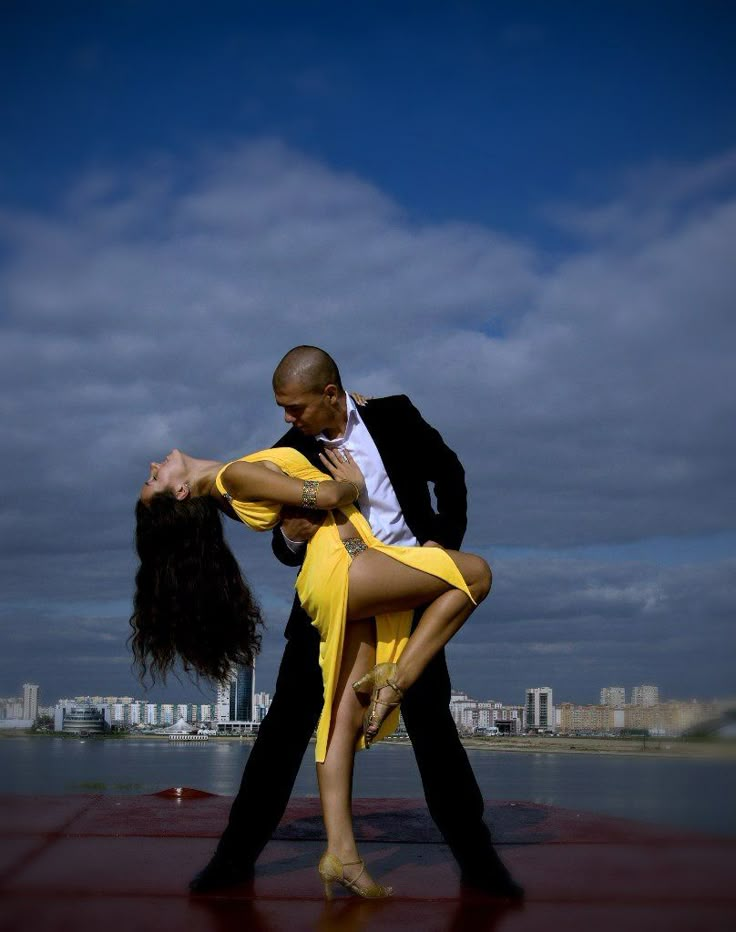
Dancing types
Dances, Theater, Estheum in the districts
Interesting about dancing
9000
There are no reviews yet.
Write a review
Zouk.in.U What is Zouk? - Zouk.in.U
As long as there is humanity, there are as many dances. These are ritual dances in primitive tribes before hunting, and appeasement of evil spirits, and dances at the birth of a new person, and funeral dances, seeing off the soul to a better world, and dances calling for war with enemies ... and much more.
“…When do people sing? When they are having fun, they sing. They sing at demonstrations. They also sing when they are happy ”(c).
The same goes for DANCE. It is impossible to imagine humanity without dance.
There are different dances, those whose popularity is impenetrable, and there are those that have lost their popularity over time.
There are folk, ballroom, sports and social dances.
And everyone has their own "talents and admirers". Every person whose soul sings and wants to dance, among the abundance of dances, can choose the dance that is closest and in tune with himself, his attitude and perception, his mood. And how can one not remember Eliza Doolittle with her “I want to dance until the morning, I want to dance - my time has come!”
Or is it from the eighties: "Well, what makes you so drawn to dance?"
There are dances that seem to have always existed.
And there are dances that have appeared recently.
One of these recent dances is the extremely sensual dance ZOUK. He is the same age as the current young generation, he comes from the eighties, from their first half - from very recent history.
Zouk music originated in the French Caribbean, Guadeloupe and Martinique. In the Creole language, the word "zouk" means a party, party, fireworks. Zouk music is a symbiosis of Haitian compa music, balacadry, pop music, Dominican music cadence and bal grandmont, antillean gwo ka, as well as mazurka and beguine.
The first popularizers of zouk in the Caribbean, and then in Latin America and around the world, was a musical group from Guadeloupe and Martinique "Kassav" (Kassav'). Its founders, the brothers George and Pierre-Edouard Décimus and Jacob Desvarieux, having polished and ennobled the carnival music of their homeland, added a little bit of salsa, soul vocals, reggae to it. The result was a zuk.
Zouk became famous for the concerts, which were spectacular theatrical costume performances with various impressive elements.
Zouk songs sing about passion, separation and love, although their lyrics are only available to those familiar with the Creole language and French mixed with the language of the local Negro population. But the main theme, I repeat, is love.
Zouk is popular in Quebec, Canada, Brazil and the Dutch Antilles. In Europe, it became most popular in France. Zouk gained popularity in Asia as well. On the Cape Verde Islands (Cape Verde) developed its own special direction of zouk.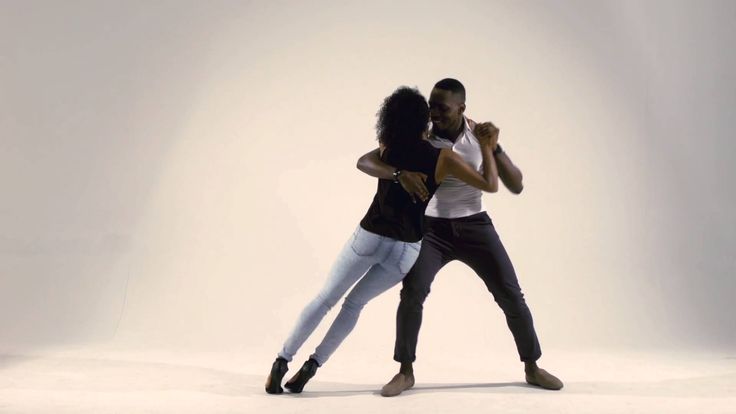 The dance is also popular in Asia.
The dance is also popular in Asia.
If we talk about zouk as a dance , then at the moment the following directions can be distinguished:
3. Brazilian ZUK
3.1 Classic Zuk
3.2 Lambazuk
3.3 Soul ZUK
3.4 Neo ZUK
3.5 ZUK FLOW
3.6 ZUK Revolution
One of the most popular species of Zuka - Brazilian Zuk. This is a style of dance derived from the lambada and performed to the rhythms of the zouk.
In the summer of 1989, the world hit parades were suddenly conquered by Kaoma's song "Lambada" (the text of which, by the way, was simply ... a plagiarism of the composition "Llorando se fué" by the Bolivian group Los Kjarkas J). Music and dance, which until then were known only in Brazil, became popular all over the world. Lambada fever swept the whole world, the song came from everywhere: from irons to radios.
But nothing lasts forever under the moon, 4 years have passed and the popularity of the lambada began to decline. Music and dance were losing their ubiquity, and millions of fans around the world were helpless. Some dancers have begun to mix lambada with other musical styles in order to fully enjoy it before it fades into oblivion forever. As a result, they settled on the Franco-Caribbean zouk and kizomba.
Music and dance were losing their ubiquity, and millions of fans around the world were helpless. Some dancers have begun to mix lambada with other musical styles in order to fully enjoy it before it fades into oblivion forever. As a result, they settled on the Franco-Caribbean zouk and kizomba.
Thus began the era of the zouk lambada, or simply lambazook.
Over time, lambazouk began to change and new directions began to appear, such as classic Brazilian zouk, neozouk, zoukflow, and now zouk can be danced to R'n'B, reggaeton, dancehall..
So.
Zouk-love (zuklav) is a variety of zouk, Haitian and French-Caribbean variant, which is considered one of the leading types of dance. The pace of performance is slow, expresses lyrical and dramatic feelings of love and parting. Quite simple to perform, basic steps with the transfer of weight from one leg to another. Hip movements are light and smooth. It is characterized by the maximum proximity of partners during the dance and limited movement in space. Zouk-love is a club dance.
Zouk-love is a club dance.
Kizomba (Kizomba) is a modern urban popular dance for couples, as well as a musical genre. Kizomba is a sensual, romantic, rather sexy dance. This dance originated as a mixture of the traditional Angolan semba and the Caribbean zouk. Due to the similarity of the rhythm, the musical style of kizomba is sometimes confused with the Brazilian zouk, however, unlike zouk, kizomba is less sweeping and energetic dance, as well as closer (partners almost do not increase the extremely close distance during the dance).
Styles of Brazilian Zouk:
In addition to the main styles of Brazilian Zouk ( Porto Seguro and Rio Style ) there are a number of less common and newer styles.
Rio Style - Also called Carioca Lambada or Rio Style Lambada. He was born in Rio de Janeiro, specifically on Ilha dos Pescadores around 1989. Mom and dad of this style are Adilio Porto and Renata Pesaña. Adilio came up with some basic steps of Rio style: he transformed the basic step from the basic step of Samba de gafiera, viraginha and lateral from bolero, mutual turns from jive.
Adilio came up with some basic steps of Rio style: he transformed the basic step from the basic step of Samba de gafiera, viraginha and lateral from bolero, mutual turns from jive.
Porto seguro style (lambazouk) is one of the most common Zouk styles and is often seen as an evolution of the original Lambada, although in its current form it is very different from the original. This style is characterized by energetic performance and a "joyful" mood. Although it is an energetic and rather fast style, the movements in it are smooth, continuous, and at the same time rhythmic. The dancers follow in a circle, "flowing" from one movement to the next.
Soulzouk (soulzouk ) - was created in 2005 in China by a teacher from Brazil. Soulzuk or zouk-FreeStyle is a new way to dance zouk. More modern, it differs from the traditional Brazilian zouk in a new way of connecting with the music. This type of dance can be performed not only to zouk music, but also to various musical genres such as hip-hop or R'n'B.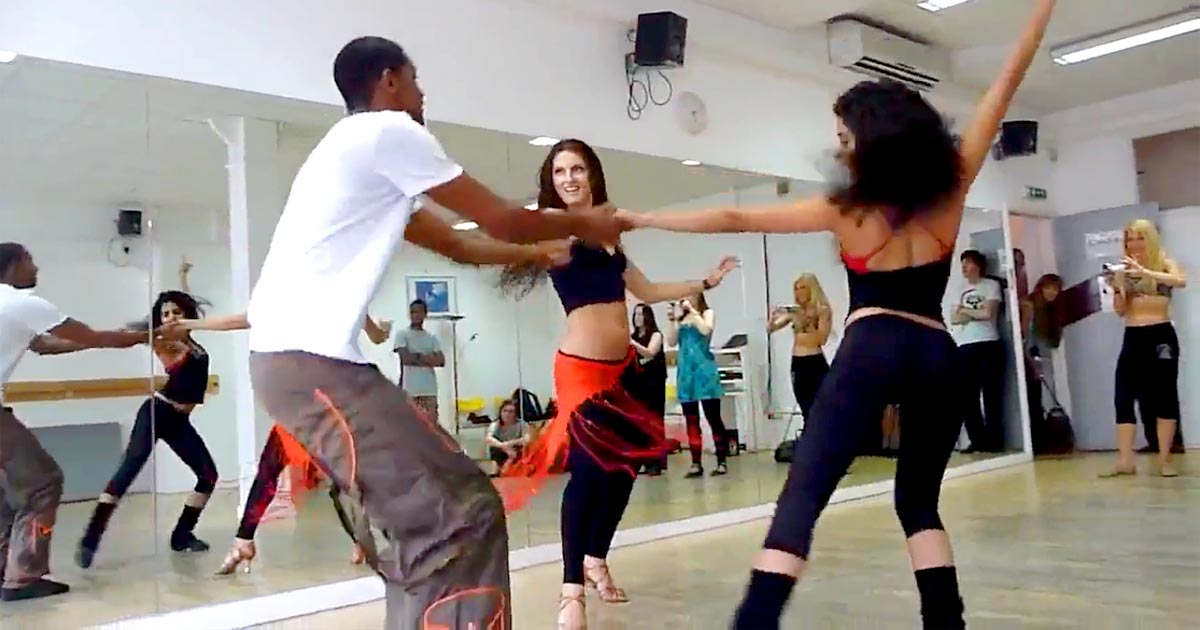 Soulzuk introduced a lot of innovations to the dance such as the twist step and many others
Soulzuk introduced a lot of innovations to the dance such as the twist step and many others
Neozouk was created and promoted by DJ Mafie Zouker. The music can shift from a traditional uninterrupted baseline, as in Zouk Lambada, to soft sounds and melodies or hard Industrial, ranging from traditional melodies from Brazil to remixes of popular music with an emotional tinge. All of these musical variations create space for the dancers to effectively express the accents and slow down the music. In Neo-Zouk, they usually dance in a circle, without breaking the connection of the hands, often the tools of the counterweight of the partners connected in movement are used to lead.
Zouk-Flow (zoukflow) - smooth and consistent "flow" of impulses of the partner's arms and body into the movements of the partner's arms and body. That is, the partners "float" in the hands of each other.
What is a zouk? This is a paired, rather playful and sexy dance. Unlike the Latin American salsa dance, it is characterized by the conduct of the dance due to the hands and strongly pressed hips of the partners. It is these basic movements that give the dance a zest, bring passion to it, distinguish it from other dances. Counting in zouk is simple: one step is performed on the first count, and two steps on the second. Steps and turns of the partner are accompanied by circular rotations of the head.
Unlike the Latin American salsa dance, it is characterized by the conduct of the dance due to the hands and strongly pressed hips of the partners. It is these basic movements that give the dance a zest, bring passion to it, distinguish it from other dances. Counting in zouk is simple: one step is performed on the first count, and two steps on the second. Steps and turns of the partner are accompanied by circular rotations of the head.
Zouk is danced in Brazil using modern, "rounded" and sensual lambada movements. In the basic step, when the partners move in different directions, the hips begin to move first, then the whole body follows them. This is what sensuality achieves. Girls are encouraged to have long hair, this gives the dance additional beauty. The dance is replete with beautiful curves of the body and wave movements, and the zouk music resembles the rhythm of a heartbeat. It should be noted that in the Brazilian zouk the flexibility of the girl is used by 100%. She has to bend in all directions, throw her head back, do head rolls, cambrai, and so on.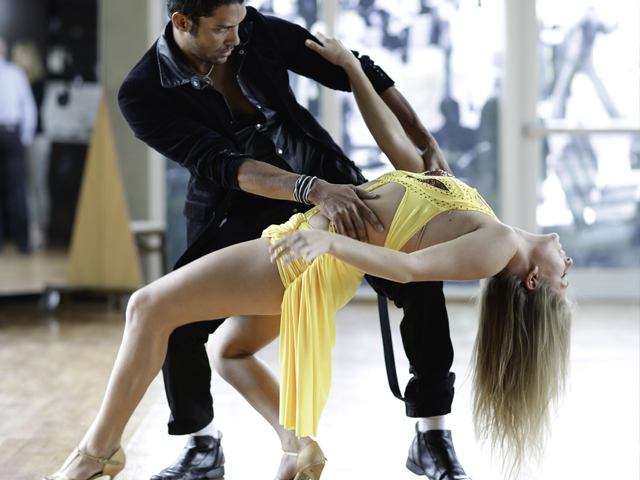 Her movements resemble a trembling blade of grass in the wind. Numerous turns, beautiful hand movements, approaching and distancing partners from each other - all this is combined into an amazing composition, which is woven into either smooth transitions or rapid movements. As a result, the dance becomes simultaneously like a passionate flame of fire and an endless stream of water - two things that you can look at endlessly, two elements that are so different and similar to each other at the same time.
Her movements resemble a trembling blade of grass in the wind. Numerous turns, beautiful hand movements, approaching and distancing partners from each other - all this is combined into an amazing composition, which is woven into either smooth transitions or rapid movements. As a result, the dance becomes simultaneously like a passionate flame of fire and an endless stream of water - two things that you can look at endlessly, two elements that are so different and similar to each other at the same time.
In September 2012, zouk was officially recognized by the United Kingdom Alliance of Professional Teachers of Dancing & Kindred Arts (UKA) and the International Dance Organization (IDO).
In January 2013, the first documentary film "Dance of Love" about the Brazilian Zouk was released and received a special prize from the jury of the California Film Awards Festival. The tape tells about four people who have dedicated their lives to dance - Gilson Damasco, Cláudio Gomes, Shannon Hunzicker and Kwok One.

